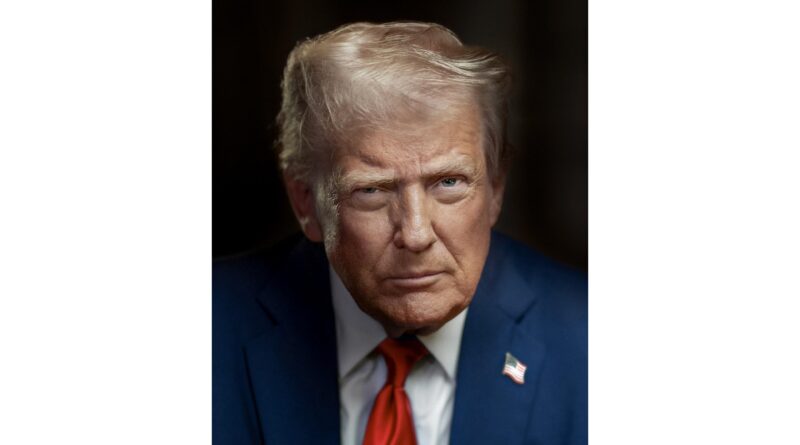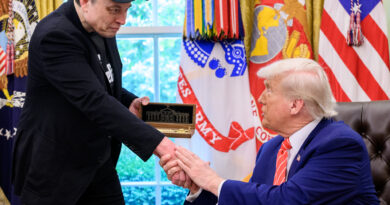Trump Tariffs Under Fire: Supreme Court Justices Signal Doubts
The U.S. Supreme Court has taken up a pivotal case examining the legality of President Donald Trump’s sweeping global tariffs. During oral arguments on November 5, 2025, several key justices appeared skeptical of the administration’s expansive use of executive authority in trade matters. This development raises questions about the balance of power between the president and Congress on international trade.
Trump tariffs, imposed during his first term and continued into his second, targeted imports from major trading partners like China and the European Union. These measures aimed to protect American industries but sparked widespread debate over their economic impact. The case, brought by affected businesses and trade groups, challenges whether the president can unilaterally enact such broad trade restrictions without congressional approval.
Background on the Trump Tariffs
The Trump tariffs began in 2018 as part of an effort to address trade imbalances and unfair practices abroad. Under Section 232 of the Trade Expansion Act and Section 301 of the Trade Act, the administration justified these duties on national security and intellectual property grounds. Steel and aluminum tariffs hit allies and adversaries alike, while tech products faced duties amid the U.S.-China trade war.
By 2025, these tariffs have generated billions in revenue but also increased costs for U.S. consumers and manufacturers. Industries reliant on imports, such as automotive and electronics, have reported higher prices and supply chain disruptions. The Supreme Court’s involvement signals a potential review of the president’s trade powers established decades ago.
Historical precedents like the 1970s steel tariffs under President Nixon show Congress has traditionally played a role in trade policy. Yet, recent administrations have leaned on executive actions for speed and flexibility. Critics argue this erodes checks and balances, while supporters see it as essential for rapid response to global threats.
Key Moments from the Oral Arguments
During the hearing, Justice Elena Kagan questioned the breadth of presidential authority, asking if it would allow unchecked economic warfare. Chief Justice John Roberts probed the administration’s legal reasoning, highlighting potential overreach. Justice Brett Kavanaugh expressed concerns about the tariffs’ impact on everyday Americans.
Justice Amy Coney Barrett focused on the statutory limits of the trade laws invoked. Her line of questioning suggested discomfort with interpreting old statutes to grant modern expansive powers. These exchanges indicate a court wary of endorsing unlimited executive discretion in trade.
Advocates for the tariffs defended them as vital for national security, citing threats from foreign steel dumping and tech theft. However, challengers emphasized the economic fallout, including retaliatory tariffs from abroad that hurt U.S. exports like agriculture.
Stakeholder Perspectives
Business leaders from affected sectors, including the U.S. Chamber of Commerce, have voiced support for limits on unilateral tariffs. They argue that predictable trade rules foster investment and jobs. Farmers, hit hard by retaliation, echo this sentiment through groups like the American Farm Bureau Federation.
On the other side, labor unions and manufacturing advocates praise the tariffs for shielding domestic jobs. The United Steelworkers union has filed briefs backing the policy, claiming it revitalized industries in the Rust Belt. This divide reflects broader tensions in American economic policy.
Economic Implications of the Case
A ruling against the Trump tariffs could upend global supply chains and trade relations. If the court strikes down the measures, Congress might need to act swiftly to redefine trade authority. This uncertainty could spook markets, as investors weigh the risks of policy shifts.
Economists estimate the tariffs have raised household costs by hundreds of dollars annually. While they boosted some sectors, overall GDP growth suffered by 0.2% to 0.5% in recent years. A Supreme Court decision affirming limits might encourage multilateral trade deals over unilateral actions.
Globally, partners like the EU and China watch closely. Retaliatory measures could escalate if the tariffs are upheld, straining alliances. For U.S. consumers, cheaper imports might return, but at the potential cost of domestic manufacturing protections.
Expert Analysis
Trade experts at the Peterson Institute for International Economics warn that unchecked tariffs risk a trade war spiral. They point to historical parallels like the Smoot-Hawley Tariff Act of 1930, which deepened the Great Depression. Moderation through judicial oversight could stabilize trade.
Constitutional scholars, including those from Harvard Law, argue the case tests separation of powers. They believe a narrow ruling could preserve executive tools while requiring congressional input for major tariffs. This balanced approach might appeal to the court’s conservative majority.
Analysts from Goldman Sachs predict market volatility regardless of the outcome. A pro-tariff decision might buoy steel stocks but pressure retailers. Investors should monitor signals from the court’s conservative justices, who hold sway in close cases.
Historical Context and Precedents
The U.S. Constitution grants Congress power to regulate commerce, yet presidents have wielded trade authority since the 1930s. The Reciprocal Trade Agreements Act delegated flexibility, but recent uses stretch those bounds. The Trump administration’s novel applications invite judicial review.
Similar cases, like the 2010s challenges to Obama-era trade deals, show courts often defer to executives on foreign affairs. But the scale of Trump tariffs, affecting trillions in trade, demands closer scrutiny. This hearing marks the first major test since Trump’s return to office.
Looking back, the 1980s Japan trade tensions led to voluntary restraints rather than tariffs. Today’s geopolitical landscape, with rising powers like China, complicates simple solutions. The court’s wisdom could guide future presidents on trade levers.
Comparison to Past Administrations
Biden’s team retained many Trump tariffs, tweaking rather than scrapping them. This continuity underscores their political appeal in swing states. Yet, legal challenges persisted, culminating in this Supreme Court showdown.
Earlier presidents like Reagan used targeted tariffs effectively without broad overhauls. The current case highlights how modern globalization amplifies tariff ripple effects. Lessons from history suggest blending diplomacy with targeted protections yields better results.
Broader Impacts on U.S. Policy
Beyond economics, the ruling could influence foreign policy. Strong presidential trade powers aid negotiations like the USMCA revamp. Limiting them might slow responses to threats like currency manipulation or subsidies.
Domestically, it affects midterm strategies. Tariffs resonate with working-class voters, but high prices alienate suburbanites. Politicians from both parties will parse the decision for electoral angles.
For global standing, the U.S. credibility in WTO disputes hangs in balance. Allies question unilateralism, pushing for reformed multilateral systems. A restrained court stance might rebuild trust in rule-based trade.
Stakeholder Reactions
Environmental groups see opportunity in a ruling curbing broad tariffs, arguing they hinder green tech imports. Tech firms worry about innovation stifled by duties on components. Diverse voices underscore the multifaceted stakes.
Consumers, via advocacy like Public Citizen, demand relief from tariff-driven inflation. Small businesses, squeezed by costs, join calls for clarity. This chorus amplifies the case’s resonance beyond legal halls.
Future Outlook and What to Watch
The Supreme Court typically rules by late June, but this high-stakes case might come sooner. Watch for opinions from swing justices like Gorsuch or Kavanaugh. Their views on executive power will shape the verdict.
If tariffs survive, expect more challenges in lower courts. Congress could legislate clearer guidelines, bridging executive-congressional gaps. Trade policy might evolve toward hybrid models blending speed with oversight.
Investors eye sectors like manufacturing for gains and retail for losses. Economists predict a 1-2% GDP jolt depending on scope. Global markets, from Asia to Europe, brace for U.S. signals.
Practical Takeaways for Readers
For businesses, diversify suppliers to mitigate tariff risks. Consumers, budget for potential price hikes in affected goods. Policymakers, prioritize bipartisan trade reforms.
Understanding these dynamics helps navigate uncertainty. Stay informed on developments, as they touch daily life from grocery bills to job markets. The balance of power at stake affects us all.
As the case unfolds, it reminds us of trade’s interconnectedness. Judicial wisdom could foster fairer global exchanges, benefiting American prosperity long-term.
For those tracking Trump’s economic policies, this ruling ties into broader market reactions seen recently. Similarly, tensions in U.S.-China relations amplify the tariffs’ significance in tech trade.
Earlier coverage on global trade slumps highlights how such policies ripple worldwide. These events underscore the high stakes for international commerce.
To grasp the fundamentals, readers new to trade policy might explore stock market basics, as tariffs influence investments. For broader economic context, saving vs investing strategies offer timeless advice amid volatility.
Those interested in policy impacts can delve into economic policy guides, though evergreen resources like APR and interest explanations help understand related financial effects. Understanding compound interest basics provides perspective on long-term economic shifts from trade decisions.
Source: ABC News




